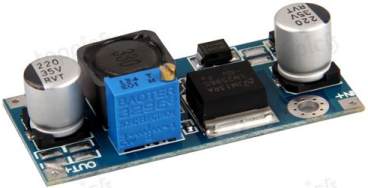Never done this before so .... trying to get my head around how you actually run additional circuits off your bike battery in terms of where the wires are taken off from and whether you need some kind of junction box or splitter inserted.
At the moment my setup will look like this before taking off a (likely) 9v supply and a 12v supply, each via its own step-down converter with heatsinks :
http://www.pedelecs.co.uk/forum/electric-bicycles/13759-bridge-battery-controller-4.html#post168025
I've yet to insert the toggle switch to isolate the controller but have all the parts ready.
Guess I'll need 2 more switches - one for isolating the lighting circuit and another for isolating the 12v accessory circuit.... (and a 3rd for the cruise control !). Bought 5 4110 MOSFETs but think I may need more !
- one for isolating the lighting circuit and another for isolating the 12v accessory circuit.... (and a 3rd for the cruise control !). Bought 5 4110 MOSFETs but think I may need more !
Can anyone show / tell me where and how I actually take the 2 new supplies off from the battery, in the context of d8veh's crystal clear diagram linked above ... and how these parallel supplies then get isolated from the battery to stop them drawing trickle power ? I am envisaging having to swap out the Deans connectors for a 3-way supply connector or something like that . Am presuming the split is done before the controller (it's a KU123).
. Am presuming the split is done before the controller (it's a KU123).
If it's relevant this is the socket system and inline fuse holder I have ordered for the 12v accessory circuit and waiting to be delivered ...
Waterproof Lighter Power Socket Locking Plug Boot 12 Volt Marine Motorcycle | eBay
Special Listing to Add An Inline Fuse Holder When Purchasing A Socket Product | eBay
At the moment my setup will look like this before taking off a (likely) 9v supply and a 12v supply, each via its own step-down converter with heatsinks :
http://www.pedelecs.co.uk/forum/electric-bicycles/13759-bridge-battery-controller-4.html#post168025
I've yet to insert the toggle switch to isolate the controller but have all the parts ready.
Guess I'll need 2 more switches
Can anyone show / tell me where and how I actually take the 2 new supplies off from the battery, in the context of d8veh's crystal clear diagram linked above ... and how these parallel supplies then get isolated from the battery to stop them drawing trickle power ? I am envisaging having to swap out the Deans connectors for a 3-way supply connector or something like that
If it's relevant this is the socket system and inline fuse holder I have ordered for the 12v accessory circuit and waiting to be delivered ...
Waterproof Lighter Power Socket Locking Plug Boot 12 Volt Marine Motorcycle | eBay
Special Listing to Add An Inline Fuse Holder When Purchasing A Socket Product | eBay
Last edited:











